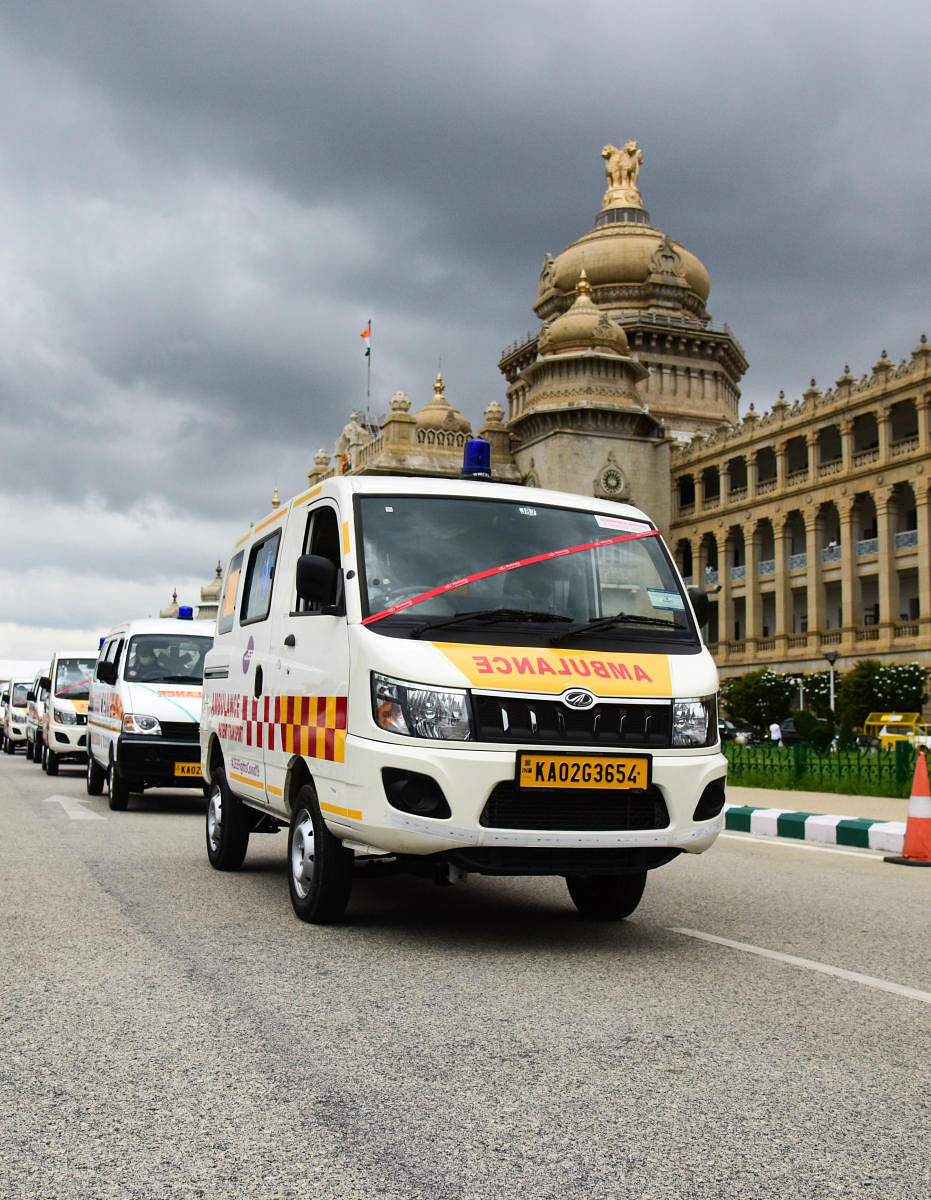
The failure of Karnataka’s government-run ambulance services to ferry accident and medical emergency patients to the hospital within the critical ‘golden period’ is costing the state heavily in terms of human lives. People, whose lives could have been saved had they reached the hospital early, are dying. According to the Comptroller and Auditor General’s (CAG) report for 2014 to 2019, the Arogya Kavacha ambulance service reached the patient to a hospital within 30 minutes in 72% of the cases and in an hour in nearly 50% of cases. The objective of the 108 Arogya Kavacha service is to ensure speedy response to a patient in need of emergency medical attention. The aim is to reach a patient within minutes of the receipt of a phone call. However, the CAG report indicates that the Arogya Kavacha’s ambulance service is not as swift and efficient as it should be.
To be fair, the Arogya Kavacha has helped lakhs of people across the state since its launch in 2008. It has ferried patients from remote villages to hospitals. Its ambulance personnel have risen to the occasion countless times to give emergency support to patients, even helping in delivering new-born babies in the ambulances. However, it needs to speed up its response to be truly effective. It is well known that in case of road accidents or medical emergencies, the first hour is the ‘golden hour’; if timely medical treatment is given during this period, a victim or patient has a higher chance of survival. Prompt medical attention can not only reduce the severity of injuries but also saves lives. Slow response of ambulance services can thus make a huge difference in saving lives.
There are several reasons for Arogya Kavacha’s below par performance. A part of the reason is that there is a shortage of ambulances and personnel, which means that many areas are still poorly served by the ambulance service and it takes time to even reach the patient, let alone ferry her to a hospital. Besides, many jobs are vacant, which means that many ambulances do not have trained attendants. Public irresponsibility too has undermined Arogya Kavacha’s work. It has been reported that around 60% of the calls made to the emergency service are prank calls, which means that much of the service’s energies are being wasted by the public. None of the problems that beset the Arogya Kavacha are impossible to fix. The government must act to ensure the public is able to tap its full potential.